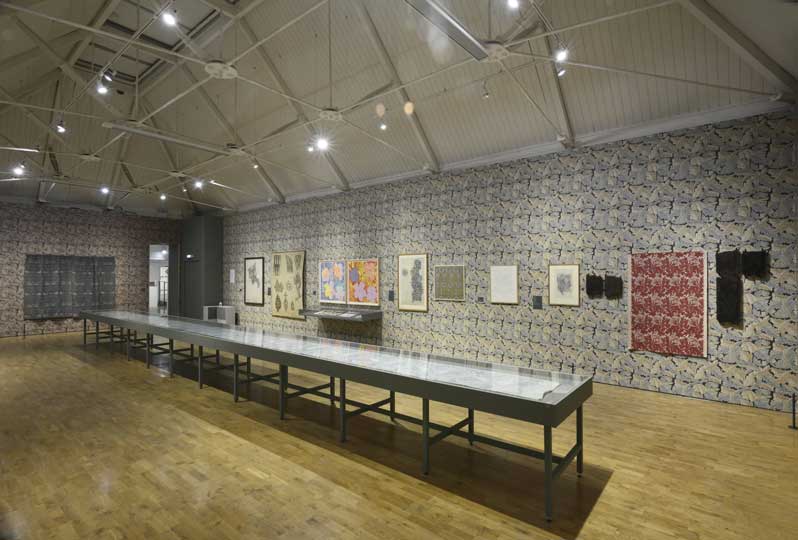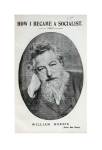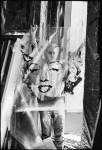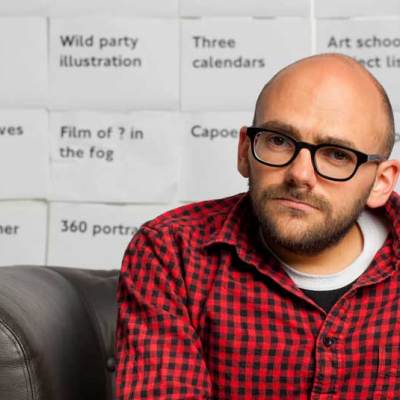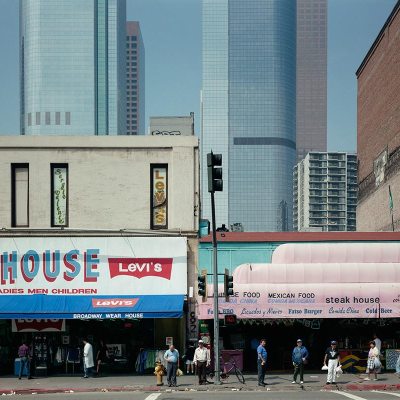Jeremy Deller’s A History of the World (1997–2004) famously takes the form of a flow diagram charting the associations between acid house and brass band music in relation to the rise and fall of British industrialism. As an established master of tenuous links, it seems only natural that Deller was chosen to curate the new exhibition at Modern Art Oxford, ‘Love is Enough: William Morris & Andy Warhol’. Morris was working within and against the structures of 19th-century industrialism, whereas Warhol’s ‘Factory’ was a 20th-century temple to mass production.
There’s nothing the gallery-going public like more than a duo of disparate artists: this show at Modern Art Oxford follows in the wake of the Ashmolean’s successful ‘Francis Bacon Henry Moore: Flesh and Bone’. Curators are taking liberties with artists’ legacies like never before, playing cut-and-paste with art history in the same way that we collage our individual identities online.
It’s easy to point to the expert branding behind the show, from the enticing ice-cream colour palette to a shrewd jewellery collaboration with Tatty Devine. However, it’s hard to be cynical about an exhibition so utterly sincere. Morris’ work is presented as a product of his Socialist beliefs, despite the expense of most of his creations. Warhol’s iconic, seemingly ironic, representations of celebrities and consumer products are re-cast as a candid homage to the forms and faces he loved, and which defined his vision. Deller himself genuinely does seem to have ‘Joy in People’, finding remnants of ‘magic’ in much-maligned ‘Englishness’. All three artists emerge as experts in self-branding. On the whole, I’m sold.
‘Holy Grail Tapestry – Quest for the Holy Grail Tapestries – Panel 6 – The Attainment; The Vision of the Holy Grail to Sir Galahad, Sir Bors and Sir Percival’ (1895–96), William Morris © Birmingham Museums Trust

The exhibition stages a series of pleasing symmetries throughout the upstairs galleries. Smiling across the room at Morris’ famous Holy Grail (1896) tapestries, Warhol’s Marilyn Tapestry suddenly resembles a reverent wall hanging. Morris’ stained glass panel of medieval knights and damsels is framed by Warhol’s ethereal portraits Young Man with Heart (1954) and Woman with Hat (1957); standing before them, we become attendants at an altarpiece. In the final room, ‘Flower Power’, Warhol’s obsessive iterations of the flower motif are displayed against classic William Morris wallpaper. In a brief exchange of roles, Morris translates as trippy, Warhol as rigorous.
Less convincing are the connections made between Morris’ political activism and Warhol’s Electric Chair (1971), American Race Riot (1964) or Mao (1973). And the spirit of contradiction reaches fever pitch in a small, overheated reading room, granted a grubby strip of Morris & Co carpet in a concession to home comforts. Here we are told that we can read the books, as long as we don’t touch the oak bookcase – a 19th-century Morris design on loan from Anthony d’Offay. Is it a command, or a test?
As the bookcase is gradually sullied with greasy fingerprints, Deller surrenders his role as controlling curator. It seems the mind that creates connections isn’t exclusively that of the visionary; it is also that of the doodler and the daydreamer, of the ‘absent mind’. In the main galleries Warhol’s childhood celebrity scrapbooks appear alongside Morris’ scribblings of knights in armour, which prance across the endpapers of Reproductions from Literary Manuscripts, Vol. XLII. The artists become both the hero and the everyman. And if the history of the world is one big flow diagram, we’re part of it.
‘Love is Enough: William Morris & Andy Warhol’ is at Modern Art Oxford until 8 March 2015.
Related Posts
Diary: December Apollo (Jeremy Deller on the relationship between Andy Warhol and William Morris)
Preview: William Morris at the National Portrait Gallery (Corinna Lotz)
Political Arts: Jeremy Deller at the William Morris Gallery (Martin Oldham)


